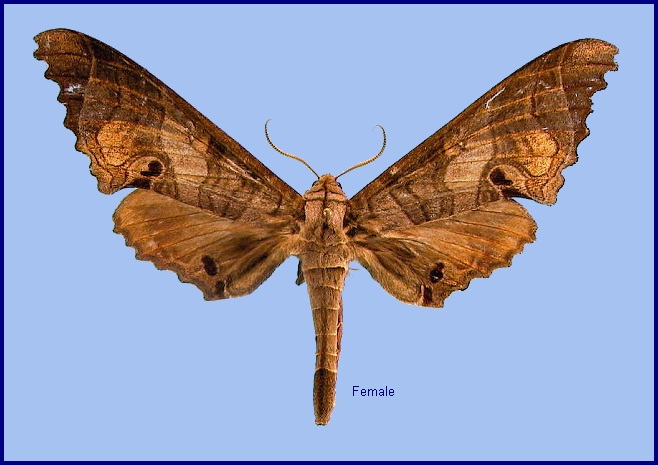
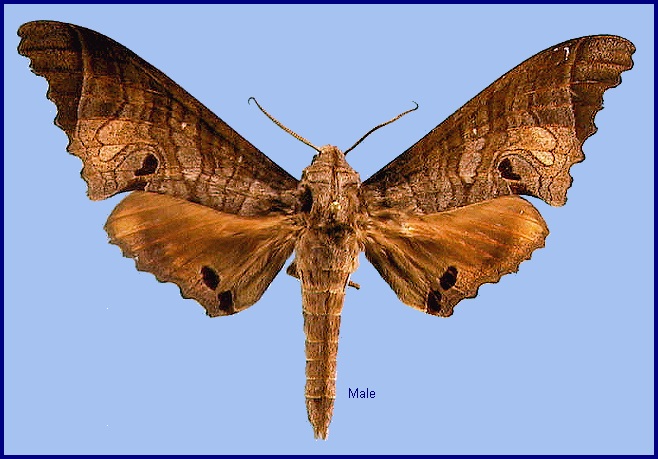
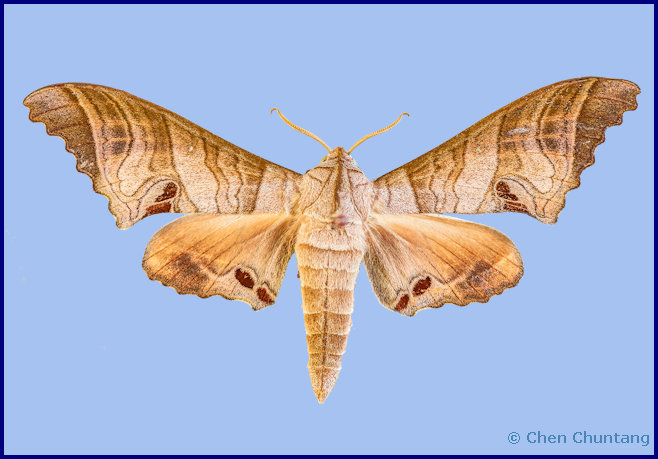
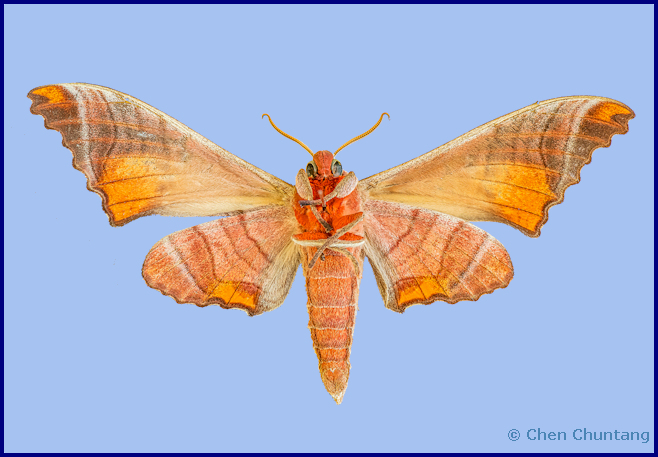
Triptogon spectabilis Butler, 1875, Proc. zool. Soc. Lond. 1875: 256. Type locality: [India, West Bengal,] Darjeeling.
Synonym. Triptogon spectabilis Butler, 1875.
Synonym. Marumba spectabilis chinensis Mell, 1922.
Synonym. Marumba spectabilis tonkini Clark, 1933.
Wingspan: 94--118mm. More rufous brown than other species of the genus and much more conspicuously coloured than Marumba dyras, Marumba sperchius and Marumba cristata. Forewing upperside with tornal loop strong, and with more weak and irregular bands than in other species; however, similar to Marumba saishiuana Okamoto, 1924. Forewing underside with a large orange-tawny area filling the anal angle. Hindwing underside with a much smaller, rectangular orange-tawny patch on termen close to the anal angle, this running parallel to the wing margin. In Marumba saishiuana these orange-tawny patches are more irregular, of equal size, and heavily infused with brown.
In the male genitalia, uncus deeply divided into two slender, obliquely rounded lobes, not pointed as in Marumba cristata. Gnathos in form of a low ridge, medial lobe hardly developed. Valva with dorso-apical lobe more downcurved than in Marumba sperchius and Marumba dyras. Harpe not dentate, long, resembling that of Marumba amboinicus. In the female genitalia, sterigma with lamella antevaginalis with ridge weakly bilobed, lobes rounded.


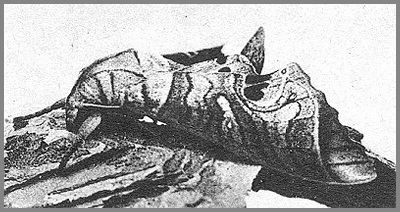
A woodland understorey species, particularly of deciduous oak (Quercus) and chestnut (Castanea).
China: 27.ii-4.x (Guangdong); iv (Hainan; Zhejiang); vi (Yunnan; Guangxi); 20.vii (Yunnan); vi-viii (Zhejiang); viii (Fujian).
Mell (1935) recorded three generations from northern Guangdong, flying between 27.ii and 4.x.
OVUM: Not described.
LARVA: Full-fed 110mm, width 12mm, horn 15 mm. According to Bell & Scott (1937), in the final instar head rounded-triangular, with a small tubercle on the vertex of each lobe. Surface of head moderately shiny, covered with small tubercles. Body shaped as in others of the genus. Horn long, straight, thick at base, and tapering evenly to a strongly, widely bifid tip. Surface of body dull, with an encircling row of large pointed tubercles on each secondary ring. There are seven oblique lateral stripes formed of larger pointed tubercles. Horn covered with large pointed tubercles.
Head grass-green, with a broad whitish stripe separating face from cheek; the tubercles whitish. Body bright yellowish-green above the spiracles, the tubercles in this area yellow, sometimes with reddish tips. The area below the spiracles and venter watery-green with white tubercles. These two areas sharply separated by a well-defined, bright yellow, subspiracular stripe on segments 2 to 4, this stripe edged below by chocolate, and sometimes continued back to 12. The oblique lateral stripes formed of yellow or red tubercles, each running across three segments. Horn bright green, with tubercles of the same colour (Bell & Scott, 1937).
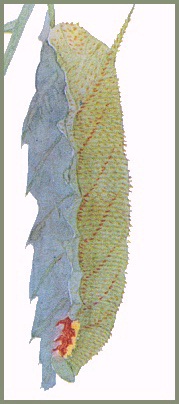
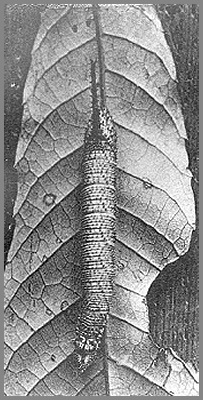
PUPA:
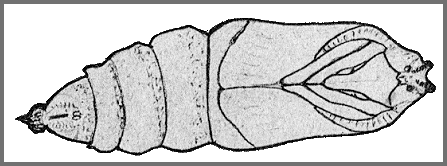
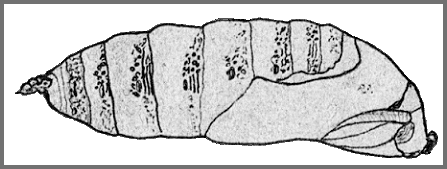
Larval hostplants. Meliosma rigida (Sabiaceae) (Inoue, Kennett & Kitching, [1996] 1997) growing as an evergreen understorey shrub in deciduous woodland.
Unknown.
China: Anhui (Mt. Huang Shan); Zhejiang (Tianmu Shan; Hangzhou; Kuocang Mountain Nature Reserve); Hubei (Xuan'an); Sichuan; Yunnan (Laojun Shan, 2579m; nr. Yingjiang, Tongbinguan, 1180m; Gaoligong Shan; west of Xizhouzhen, Yangbi Yi Autonomous County [Ji-Shen Wang, iNaturalist 2024]; Yejiaba); Hunan (Dayong; Wenxing Village); Fujian (Guangze, 1200m); Guangdong (Lianping); Guangxi (Guiping Station, Longtan National Forest Park); Hainan (Jianfengling).
Nepal, Bhutan (Irungbam & Irungbam, 2019), northeastern India (Subhasish Arandhara, 2016), southern China, Thailand, Laos, Vietnam, Malaysia (Peninsular, Sarawak) and Indonesia (Sumatra, Java, Kalimantan, Sulawesi).
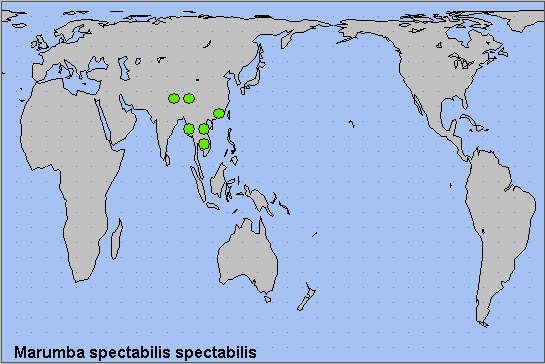
 Return to Sphingidae of the Eastern Palaearctic species list
Return to Sphingidae of the Eastern Palaearctic species list